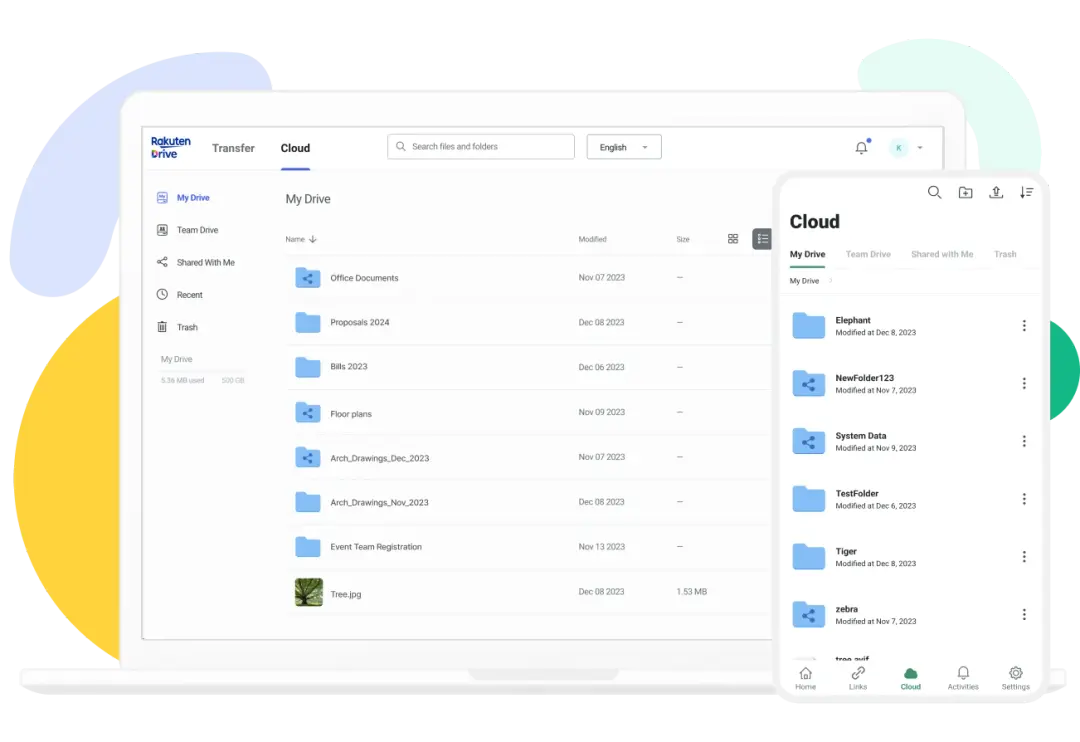3 Ways to Manage Large CAD Files Efficiently
CAD data, commonly used in design and engineering fields, includes essential assets such as product drawings and 3D models. However, due to the large file sizes of 3D models, challenges arise as projects progress—such as insufficient storage space and increasingly complex data management. Effectively storing and managing these design assets is a key factor in maintaining a company's competitive edge. In this post, we will explore 3 effective ways to manage large CAD files efficiently!
Source: Freepik
Table of Contents
1. What is CAD Data?

Source: Freepik
CAD stands for "Computer-Aided Design," which refers to data used for designing and visualizing product blueprints through computers. It enables the design of complex products and structures and is widely used across various industries, including architecture, machinery, and electronics.
CAD data, especially in the form of 2D and 3D modeling files, tends to be very large in size. This poses challenges for the design and engineering industries, such as running out of storage space or taking a long time to upload and download files. To address these issues, solutions like cloud storage and file compression can be utilized. Here, we will introduce a few representative solutions to help manage CAD files more effectively.
Effective Cloud Storage for CAD Files 👉 Exploring Rakuten Drive for Business Use
2. Ways to Reduce CAD File Size?

Source: Freepik
1) Delete Unnecessary Data
Over time, CAD drawings can accumulate unnecessary data, which increases file size. This can include unused layers, temporary objects, and duplicate elements. Cleaning up these elements after the design is finalized is an effective way to reduce file size. You can reduce file size by removing unnecessary layers, duplicate elements, or merging identical objects through effective layer management. Additionally, using the cleanup tools in your CAD software can automatically remove unnecessary objects, improving file save, load, and transfer speeds.
2) CAD File Compression
For large CAD files, using compression formats like ZIP or RAR is an effective way to reduce file size. Compressing files helps save storage space and improves upload and download speeds during data transfer. Many CAD software programs come with built-in compression features, allowing you to reduce file size directly within the software, without the need for external programs. This makes it easier to manage large files without additional tools or steps. Leveraging cloud storage can further streamline your file management. Even without compressing files, cloud platforms allow you to quickly share and download large CAD files, simplifying workflows. Cloud storage is a preferred option for many businesses as it eliminates the need for manual compression while enabling fast and efficient file sharing.
👉 Learn more about Rakuten Drive plans for fast, large file transfers without compression
3) Simplify Objects
In 3D CAD design, simplifying the detail of objects can significantly reduce file size. For example, by simplifying curves or surfaces, or reducing intricate details that are not essential for the assembly, you can reduce the file size without affecting the final design. Additionally, removing non-essential details, especially those that do not contribute to the core functionality of the design, helps in keeping the file size smaller while preserving the integrity of the model. Another effective method is to define repetitive objects or patterns. This prevents the same data from being stored multiple times, further reducing the file size. By applying these techniques, you can make managing 3D CAD files much easier, and also improve the speed at which files open, save, and load. Reducing the file size in this way streamlines workflows and enhances overall efficiency.
3. 3 Methods for Managing CAD Data

Source: Freepik
1) Regular Backups
CAD data contains crucial design information and project details, making regular backups essential to prevent data loss. Data can be lost due to errors during work, system failures, or file corruption, so conducting frequent backups is critical to minimize these risks.
For backup methods, a dual approach using both local drives and external storage devices is recommended. Additionally, using cloud-based backup solutions offers flexible storage capacity and ensures easy access to files. Regular backups help maintain the stability of your projects and protect against unexpected data loss.
📍Top 3 Methods for Data Backup: Protecting Your Data with Cloud Backup
2) Security Management
CAD data is a valuable intellectual asset for businesses, containing critical design information and technical know-how. Therefore, a strong security system is essential to protect this data from unauthorized access or leaks. Encryption and access control are key measures to enhance security and prevent data breaches.
For example, you can restrict access to CAD files by limiting which users can view or edit specific project data. Regular security audits and systematic access control within the drawing management system help prevent unauthorized access and external leaks of sensitive information.
3) Organizing File Structure
If data is not managed systematically, inefficiencies such as difficulty finding files or using unnecessary duplicate data can occur. To prevent this, it’s important to organize the file structure by project within a drawing management system.
For example, creating separate folders for each project and organizing subfolders within those by worker or drawing type can help maintain a clear structure. This makes it easier to find and share the necessary files, improving collaboration efficiency and reducing the likelihood of errors during the work process. Especially in large-scale projects, establishing an organized file structure through a drawing management system can help prevent data duplication and ensure smoother workflow.
4. CAD Drawing File Management? With Rakuten Drive Cloud Storage!

Are you struggling with managing large CAD files, running out of storage space, or dealing with slow sharing speeds? Rakuten Drive Cloud Storage is the solution! It efficiently stores large 3D CAD files and allows you to quickly share them with team members with just a click. You can purchase only the storage capacity you need, and easily scale up your storage as your needs grow, ensuring that your important data is safely backed up and protected.
For easy and fast large file transfers 👉 Learn more about Rakuten Drive for Business

Additionally, Rakuten Drive offers high-level security features to ensure the safety of your CAD files. You can set up shared folders for each project, allowing you to organize files systematically. Within these folders, you can configure access permissions, ensuring that only specific workers or teams can access and share project-related files. This level of access control helps keep your data secure and ensures that only authorized individuals can view or edit sensitive information.
We've explored ways to reduce the file size of CAD data and manage it more effectively. Using cloud storage, you can manage large CAD files cost-effectively. With the ability to easily expand storage space, it becomes easier to back up data, and by structuring shared folders systematically, you can ensure safe data sharing and storage. For smarter and more secure CAD data management, why not experience it with Rakuten Drive?
For efficient CAD drawing management? 👉 Sign up for the free trial of Rakuten Drive for Business!
